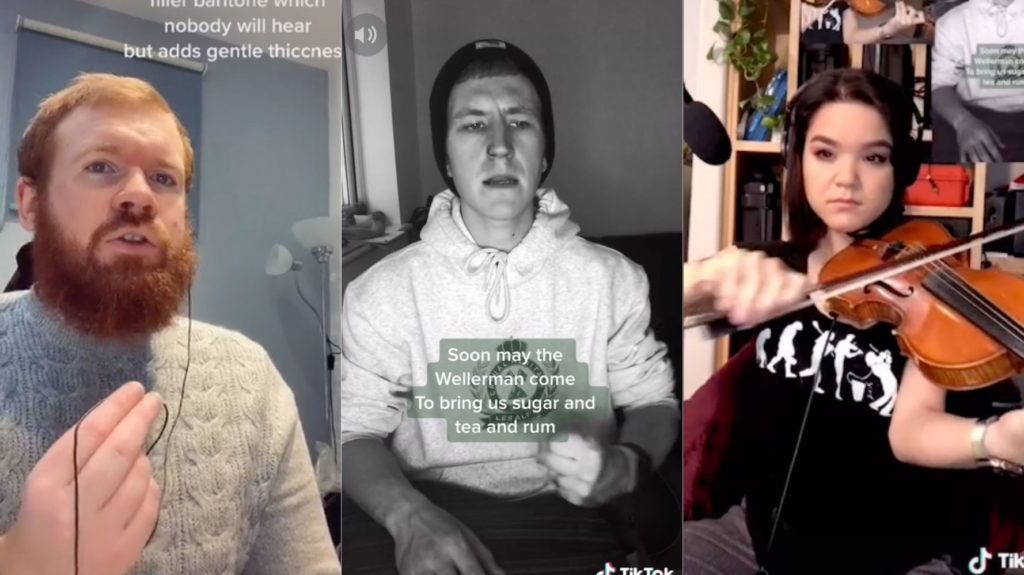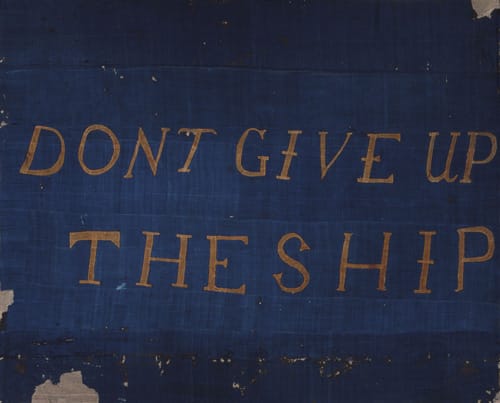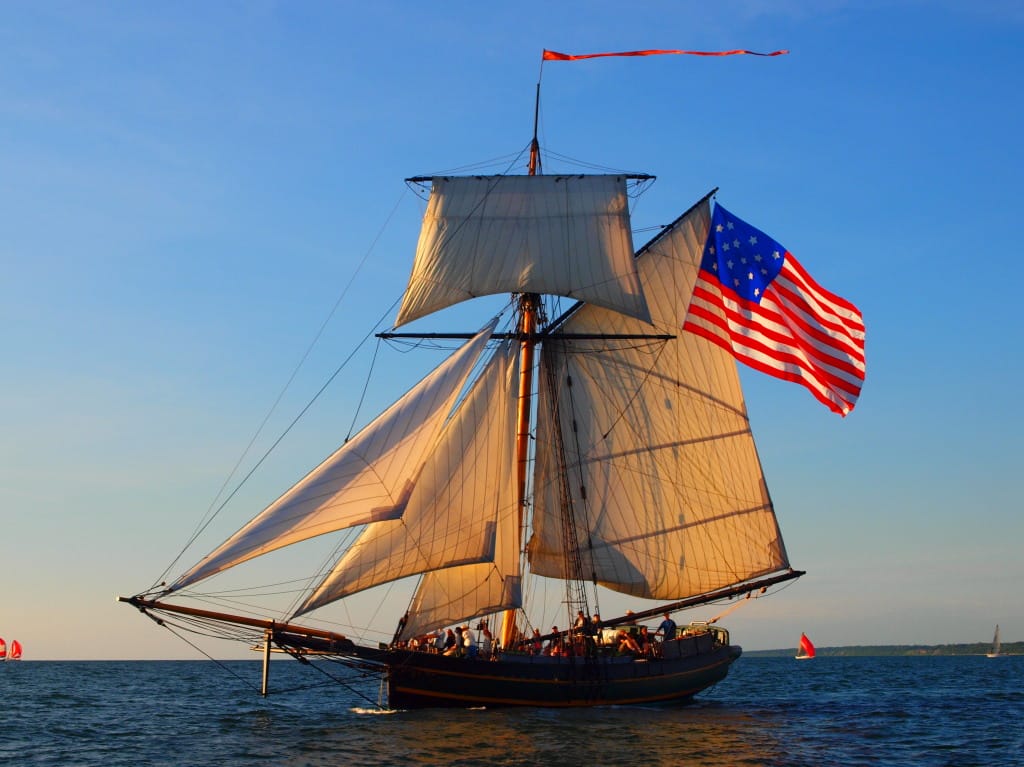A few weeks ago I randomly took a class on Sea Shanty’s. I was inspired by the craze that took place on TikTok earlier this year started by Nathan Evan’s take on the Wellerman and found the genre of music to be fascinating.
The one-time class was run by Tom Kastle who has been a singer for decades, traveling the world, collecting and performing maritime songs and stories, and captaining sailing ships on the Great Lakes.

I had a great experience with the class, which had a heavy focus on the Great Lakes region as well as everything that is involved with what a Sea Shanty exactly is. So much so that I decided to reach out Tom and asked if he would like to take part in an interview for Audio Assemble.
The thing I like most about learning about Sea Shanty’s is that there is such a rich history involved with the topic. Not only are you adding a new genre of music to your repertoire, but you are also learning a boat-load about world history and the first real “world music.”
Let’s dive right in.
The Interview:
Philip: So I took the class that you offered on March 21st, and I really enjoyed it especially being that I from then Detroit area, and very much appreciated all of the Great Lakes History. You mentioned that it is usually an 8-week course. What are some areas of interest that were not in the 90-minute class and what can someone expect out of an 8-week course?
Tom: Well, It’s a class that was started about 30 years ago, and it’s been kind of in the periphery for a long time. We started a thing called the Chicago Maritime festival where we brought in singers from all over the world to do it. I would say one thing that was missing was a little bit of the diversity. We were doing chants from Hawaii and from Europe, and we had a whole group of people from the Belize Cultural Center – so we try to reach out and try to get the maritime music as diverse as possible.
The thing I had to leave out was the Menhaden fishermen, particularly the northern neck shanty singers who are older black gentlemen who were doing fishing back in the day. Their shanties were different…
There’s a shanty or a work song rather, called I Ku Mau Mau in Hawaii which was about bringing the great big trees down from the mountains to the waterside to make them into canoes. There’s a whole series of rituals and ceremonies that go with that (it takes about a year at least). I Ku Mau Mau ended up being a political song for state sovereignty in the 1970’s.
These work songs and shanties adapt and change over the years. So I’d say a lot of the diversity was missed in that – which we would usually cover.
And then also another thing is improv. The mark of a good shanty man was being able to make stuff off the top of your head – which was what rap used to be before it got totally commercialized. But that’s probably the two main things that we didn’t even get a chance to brush on.
Philip: A lot of people are probably came to that class because of that Tik Tok?
Oh yeah. Nathan Evans. First of all he’s really good. He’s got this personality and there’s something about that look – that stripped down to nothing basic shanty thing – and it’s absolutely amazing.

I sang the Wellerman in New Zealand in 2002 with a band called the Maritime Crew, and it was one of those songs where it was like “Oh I gotta learn that song one of these days,” but I never did. And then when I heard it I was like “Oh, yeah I know that tune.” Rudy Sunde was the head of that group – the Maritime Crew called – and they were just a ton of fun; did some folk clubs with them, and some events in New Zealand, mostly in Auckland.
I just loved that tune, and it just faded away, so when I first heard it being this viral thing I was like “Oh that’s nice.” But I had no idea it was going to go this crazily viral. And it’s well deserved ya know. It’s one of those things where there’s a little bit of a moment of “Dude I’ve been doing this for 35 years, and actually sailing ships” But there’s no bad there. He’s a damn good singer, he treats the song with respect, and hey… well done.
A lot of the shanty singers I know also contributed – particularly David Coffin who’s got thousands and thousands of views on YouTube. Plus the pirate stuff with the different video games, I think it was Assassins Creed that had sea shanty’s in it. I’m probably going to be playing 4 or 5 tall ship festivals this summer on the Great Lakes and for the first time I won’t have to explain what it is I do.
Philip: You previously mentioned the black gentlemen and their specific style of shanties. I know that the Great Lakes actually has a pretty prevalent history when it comes to the underground railroad. What role did the underground railroad play in the Great Lakes and how sea shanties also play role in portraying the history of forgotten black sailors?
Tom: There’s a book that’s coming out, don’t remember the name of it, but it’s basically the underground railroad via sail, particularly the east coast and the Mississippi River.
I don’t know if you’ve heard the shanty The Ward Line. It’s a shanty that goes, “Oh the captain’s in the pilot house ringing the bell… Who’s on the way boys who’s on the way.” And that was definitely black stevedores on the docks loading copper for the Ward Line and other ships like that.
Historically there’s a book called Amongst My Best Men – African Americans of the War of 1812and that was a period of history I didn’t know anything about. I ended up captaining a vessel called Friends Good Will for the Michigan Maritime museum and it’s a war of 1812 replica vessel and the stories out of that are just fantastic. There were a lot of black sailors that were involved in that.
In fact the guy who wrote this, Gerald Altoff and I ended up hosting a documentary about the bicentennial battle of Lake Erie. And that’s where Oliver Hazard Perry was clutching the don’t give up the ship flag as he was giving up the ship and going from one to another one (hahaha). A lot of people don’t know this but if it wasn’t for two wind shifts, we would be in Canada right now. It’s a fascinating story.

Another book that comes to mind is “Black Jacks” and that is basically African American seamen in the age of sail. That’s mostly ocean but it’s really interesting and takes a look at a long period of time.
Philip: What exactly is tall ship captain?
Tom: It’s someone that is basically licensed to captain a tall ship. What I did was what they called “coming up through the hawse pipe” which means I basically started crewing as a volunteer and then I was a paid deck hand and then I was the unlicensed mate of Charlotte Anne and then I ended up getting my captains license in 1995. I started as the relief captain of the Schooner Windy at Navy Pier.
Philip: What came first, the music or the maritime job?
Tom: Ahh, well what led to the whole thing was actually playing in Irish pubs in Chicago. I was a garage band rock and roller in high school which evolved into sort of singer song writer John Prine kind of thing. Then I started playing in Irish pubs and got totally sucked into that as I absolutely loved it. I played from the Twin Cities down to Savannah Georgia to New York State and Boston – did a little floor singing and stuff in Ireland and Scotland and even opened for a Punk Rock band playing Irish music in Norway back in ’82.
I absolutely loved it and we were singing all these sea songs. My old partner and I were thinking, well if there were sea songs from the East and West Coast of America, and there’s sea songs from England and Ireland and Scotland… are there sea songs from the Great Lakes? And that’s where I met Ted Karamansky a professor from Layola. He turned us on to the Ivan Henry Walton collection.
And another thing that was happening at that time was we were doing “whale watching” shows on Lake Michigan. We have a song called “song for the whales.” People would kid us at these pubs, and they would say “What are you writing about whales for? You’re from Chicago… There’s no whales in the Great Lakes.” It started as a gag at first, but eventually we ended up getting enough people that said hey if you ever do it we’ll go with you.
I opened up the phone book one day, back in the day of phone books, and I found this old Chesapeake Bay Oyster boat from 1888 with a drawing and just said “Maybe we could charter that out?” so we rented the boat for a day and that turned into almost 30 years of sailing tall ships. We did the Great Lakes whale watch every year for 10 years. It was a ton of fun, but that was the entry level to actually becoming Sailor.
It just gets worse as you go. You get hooked on one boat and you just keep going. Eventually I was the master of Friends Good Will in South Haven, a couple of the boats in Traverse city. There’re all kinds of boats now that over the last 20 some years that have been doing some kind of environmental education, and sail training, and songs. And that just kind of all went together.

My ex and I wrote ourselves job descriptions – we were going to be singers and sailors depending on the season, and it was pretty awesome. Now I’m in Madison, Wisconsin. I fell in love with my deck hand from Friends Good Will and followed her here. I’m still doing music, still doing sailing (not as much) and I am also doing a lot more theatre and film as well.
Philip: What’s the longest you’ve ever been on a boat?
Tom: Ahhh let’s see… Probably just a few weeks. I’ve sailed mostly Great Lakes and the voyages are short. That’s one of the reasons they called it a “sailor’s paradise.” It would be 4 or 5 days you get to a port , 4 or 5 more days you go to another port.
It’s not that long. When you’re sailing 24 hours a day it really doesn’t take that long to go 1,000 miles or so. You look at the distance and you think oh this is going to take forever. But even if you’re going only 6-10 miles per hour it’s not going to take that many days to get almost anywhere in the Great Lakes.
Philip: Have you ever experienced a near capsizing event?
Tom: Let see… Some big waves in the Straits of Mackinac that was really kind of scary.
Went to ground on one vessel, which means you came up on to water was too shallow. Probably the worse so far (knock on wood) was coming into a harbor in Frankfort Michigan where basically this 70-knot line squall came through and ripped all the boats off of their anchors and I remember we were the only boat that didn’t go up on the rocks that night. That was very strange because it was like one of those things where I had no idea what was going on. You know when you are in a car and the car next to backs up and you think you’re moving but you’re not… that’s what it looked like except it was a thunderstorm and at night, and you really couldn’t tell whether you were moving or not. It was one of the most disconcerting things and it was in a tiny little harbor.

That was the strangest and probably most dangerous thing but otherwise nothing, thankfully, worse than that.
Philip: If you were to paint your favorite sea shanty what would you paint?
Tom: Ouuuuu…. I have to think about that.
I had a very, very inventive friend named Nana Calmouth in Freezeland in the Netherlands. And I played in a festival that he organizes a couple times. He saw a painting in a museum of a sailor in bassefret and he’s painting the figurehead, and you can tell he’s falling in the love with the figurehead. So Nana took that and composed basically a small folk opera out of it. We did it in a place called Volkrom Harbor with three tall ships and a folk orchestra and another classical musician on a bank of synthesizers. It was all amazing and it all came out of this one idea and this one painting.
Probably Rolling Down to Old Maui would be the one I would paint or the one I would do a film of. It’s truly unique. It’s a song I first heard on a Stan Rogers album and then he got it apparently from Emily Freidman who’s a folk journalist in Chicago, and she got it from Stan Hugels Book.
When I had the pleasure to sing with Stan and see him in Concert a couple times, he had two verses that weren’t in that particular version that Stan Rogers made pretty popular. That was also the jumping off point to know that there is no one version to any song (unless it’s an original song). You would just make them up as you went. If you sang every verse to them and you ran out of verses, then you used verses from another song.
Or you just made stuff up.
About Tom Kastle
Tom Kastle has been a singer for decades, traveling the world, collecting and performing maritime songs and stories, and captaining sailing ships on the Great Lakes. These days, Tom lives in Madison and his passions are even more diverse and include theatrical projects, from musicals to Shakespeare, a recording of original songs based mostly on traditional fiddle tunes, film projects like Francisco Torres’ Delight In the Mountain, and television, where he hosted a short documentary that was nominated for an Emmy Award. Add in musical director and composer credits, political activism with the Solidarity Sing Along and playing a political pundit with the legendary Ed Asner in God Help Us! and you have an artist living a vivid life, indeed!
“With his solo recording and original songs, Tom Kastle shows further dimensions to his talent and range of material. His resonant voice, heartfelt lyrics, and solid instrumentation proves he is a more “grounded” talent, as capable as writing about the open road as he is about the open waters.” — Lilli Kuzma: Folk Festival WDCB-FM Radio
“What do you say about a guy who can command a tall ship and all her crew, whose songs can make an Irishman cry tears of pure Tullamore Dew?” — Bryan Bowers
“I heard Tom Kastle sing his song, ‘Whose House? Our House!’…Timely. Inspiring. A great gathering song sung with power and presence.” — Holly Near